By cutting the meat against or perpendicular (90 degrees) to the grain you shorten the muscle fiber lengths and make it easier for your teeth to separate the meat.
AKA the meat is made more tender and easier to chew.
What in the Heck is “Grain” Then
This is the direction in which the muscle fibers are aligned.
The direction they form is how the muscle contracts.
What is the Grain Direction Then?
On working muscles, the direction is more pronounced as the muscle fiber bundles are thicker.
Pictured below is a piece of flank steak.
The grain structure is very pronounced which makes it easy to determine the direction to slice.
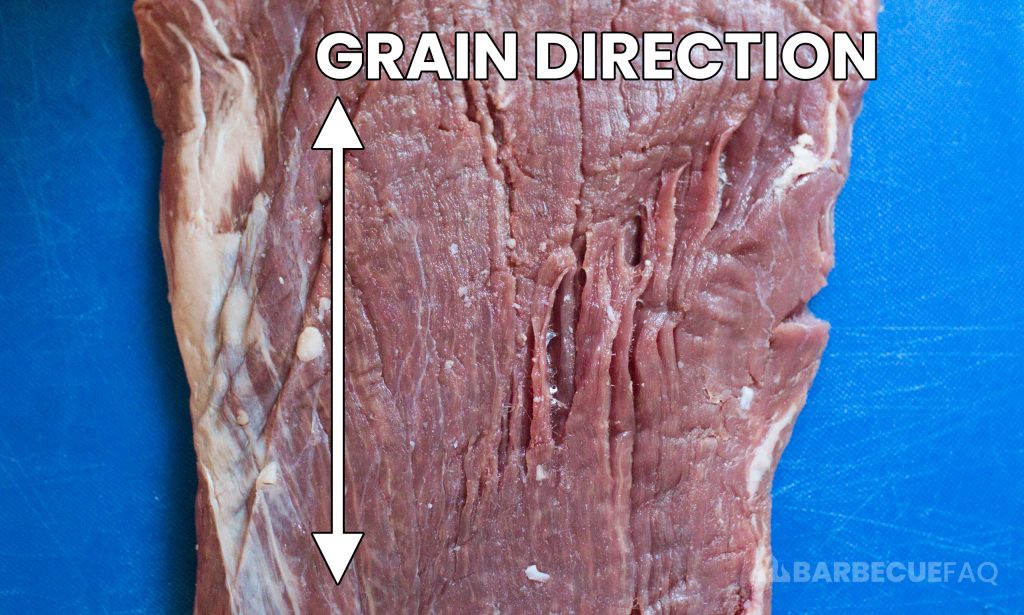
Another example of skirt steak:

As you can imagine, this is sort of problematic on smaller, weak muscles like a loin or tenderloin where the muscle fibers are very fine.
This is so true that that most people actually slice steaks like t-bone and porterhouse, incorrectly.
Here’s an article that demonstrates this point.

But it doesn’t matter it’ll be soft and tender regardless because the muscle is soft and tender.
This is further proven below.
The Next Time You Cook a Steak or Cut of Meat, Do the Following
Slice it both with and against the grain.
- Attempt to tear the muscle fibers with the grain – It’s almost impossible.
- Tear the muscle fibers against the grain – much easier.
America’s Test kitchen did a quantitative analysis of this which helps to further illustrate the amount of force needed to “chew” both with and against the grain.
Their test also proves my point in regards to weaker muscles grain direction not mattering as much.
They used a CT3 texture analyser in order to simulate how much force is required to cut (bite) 5 mm into the meat.
Force Needed to Bite
| Flank Steak | Strip Loin | |
| with the grain | 1729g | 590g |
| against the grain | 383g | 329g |
On a working muscle like the flank, you need 4.5x as much force.
Where-as on the strip loin you need 1.79x as much force.
Technically through trigonometry and knowing that you need to cut perpendicular to the grain (90 degrees) you could minimize the length of the meat fibers (making the length of the meat fibers the same as the width of the slice).
This is hardly practical though as nobody is using a protractor to cut their meat.
What Happens if You Slice Parallel or WITH the Grain?
The result will be a tougher/chewier piece of meat.
Below is an example I used in my article on slicing beef jerky.
Some people like their jerky to have a “tug” – to do this, you’d slice with the grain.
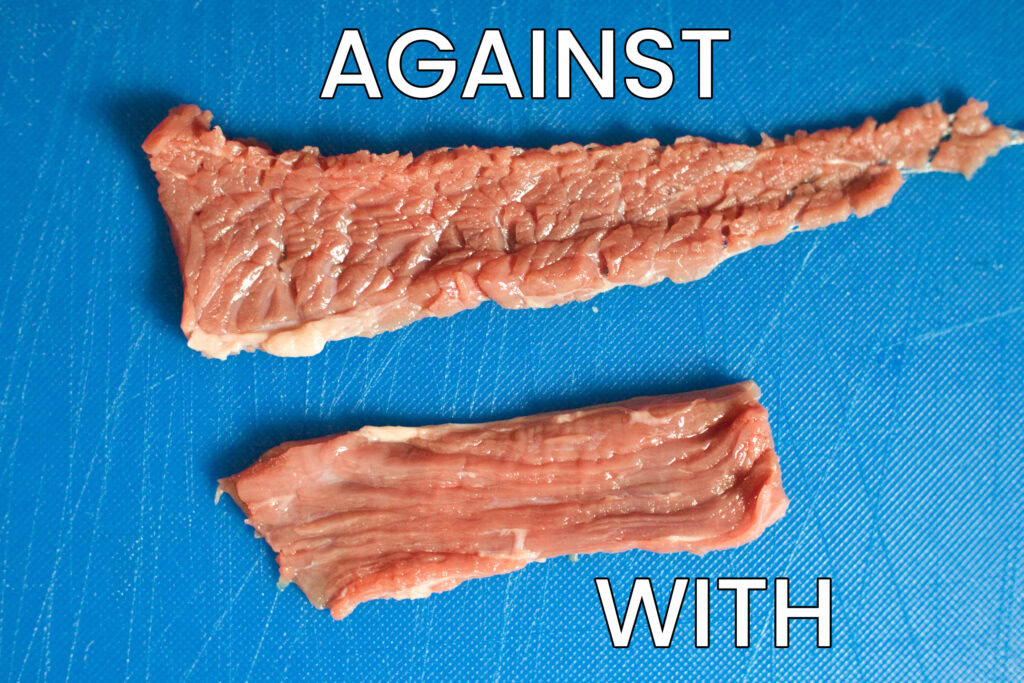
If you were to try to pull the top piece apart with your hands, it’ll be easy.
Try to do the same with the bottom piece, nearly impossible.
This same thing is true for something like Steak and chewy the meat.
Are Grill Marks the Same?
No, sear and/or grill marks have nothing to do with the grain of the meat.
Sear marks are the result of the maillard reaction of amino acids and are independent of meat’s grain structure.
You can literally force them in any direction you want.

Does Poultry have a Grain Structure?
Chicken breast’s typical grain structure looks like the below, BUT slicing completely against the grain is nearly impossible as the grain/striations tend to curve.
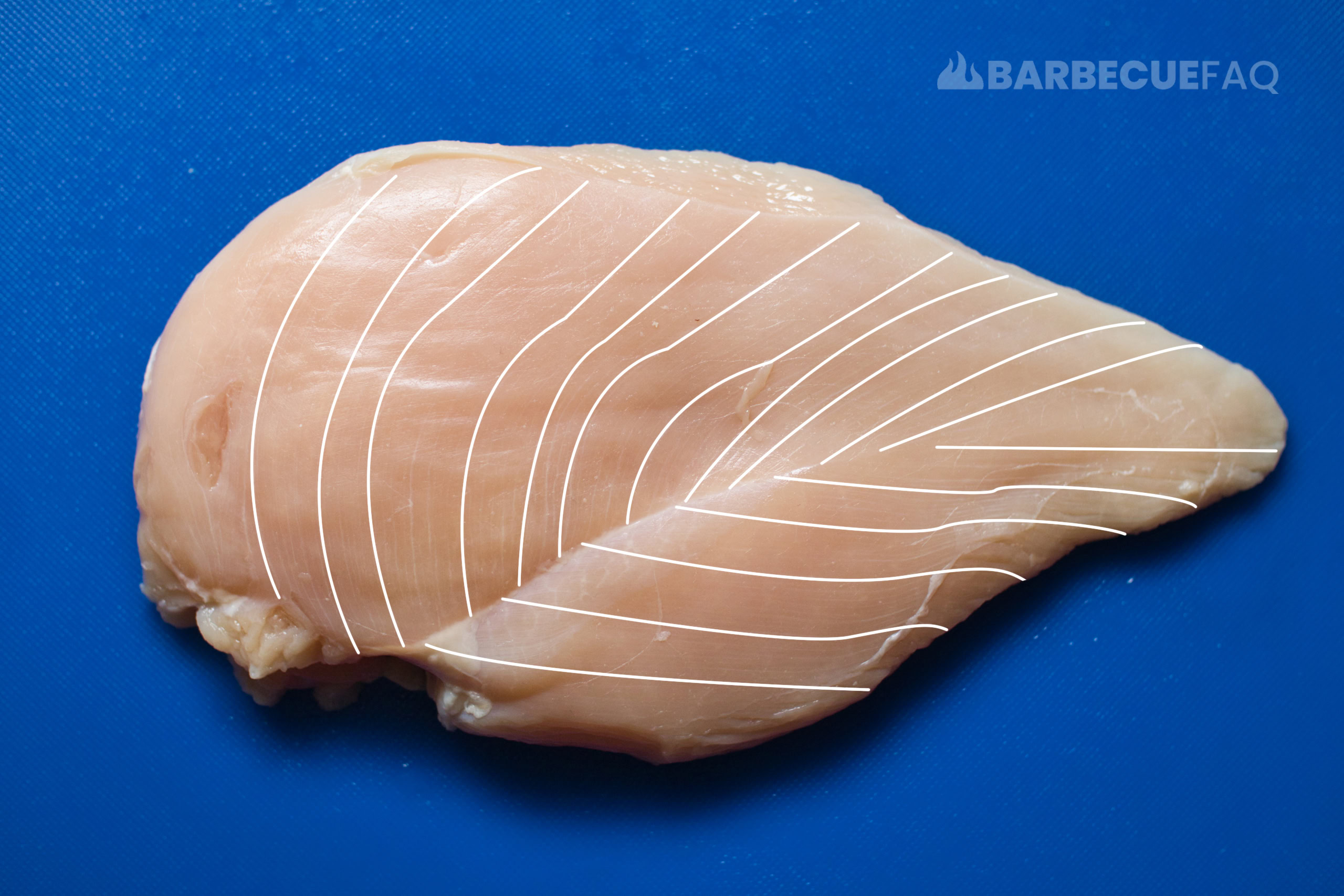
Slicing against the grain with chicken doesn’t tend to matter much, if at all.
Truthfully, you can slice with, against, on a bias, or vertically. The end result is likely to be tender regardless simply due to the muscle disposition of a chicken.



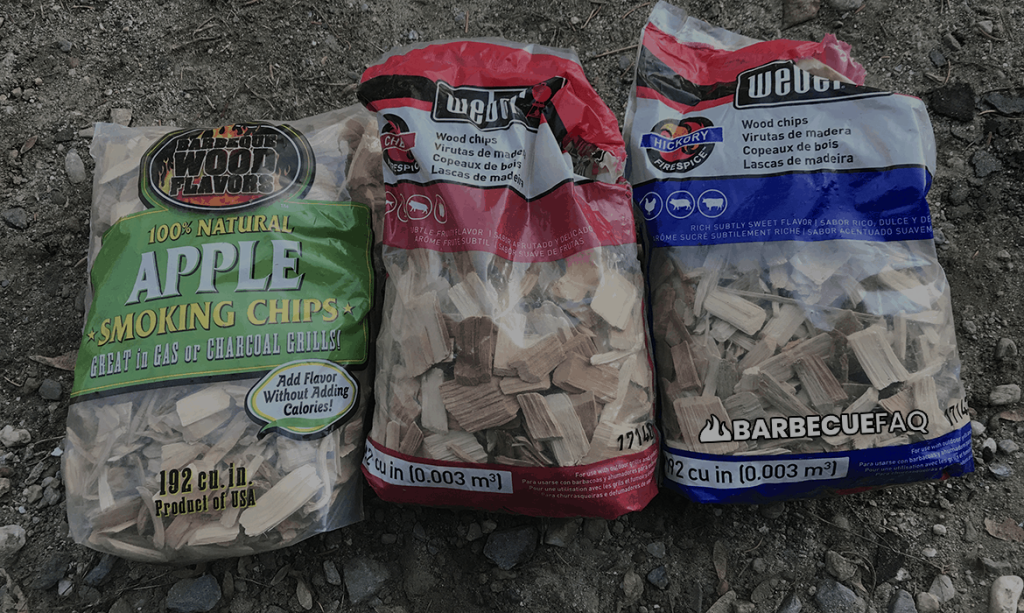
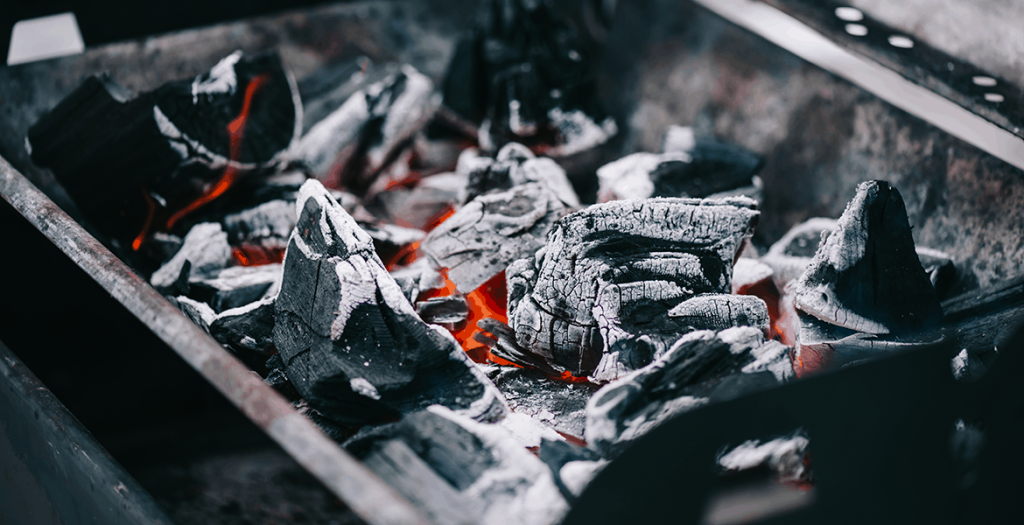
4 comments
Mike Larson
Thanks for the pictures, great!
Dylan Clay
Happy to help Mike!
Maddy
Very helpful! Thank you!!
Dylan Clay
Happy to help Maddy!